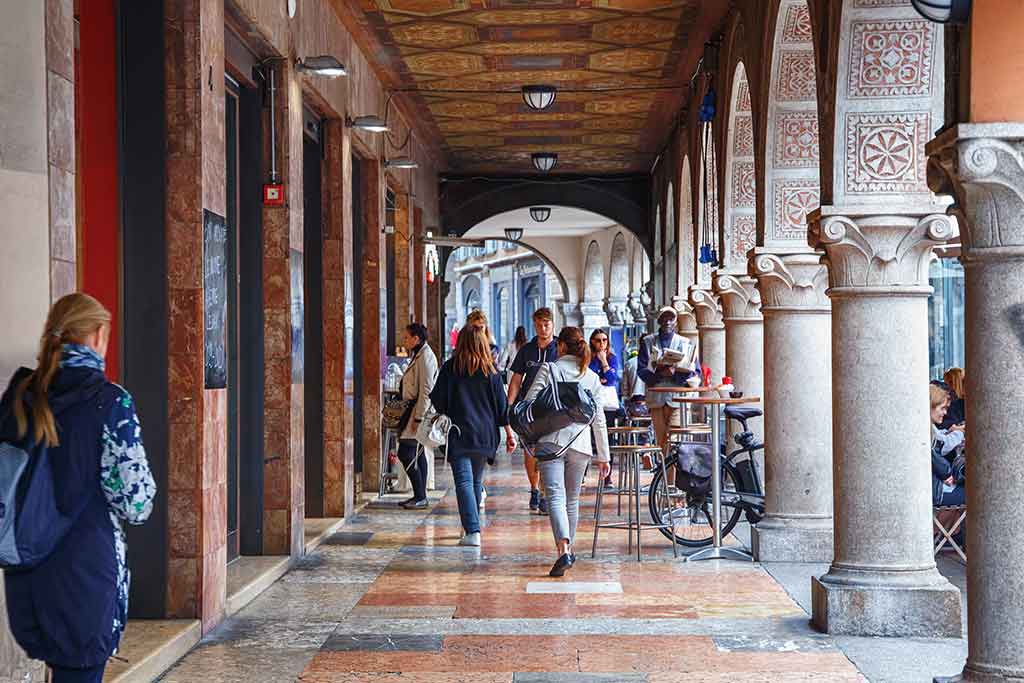 The city of Bergamo
The city of Bergamo is divided into two parts: Bergamo Alta, on the hill, fenced by high walls, and Bergamo Bassa, in the plain below. From here starts our visit, where is the Accademia Carrara which hosts one of the most important art galleries in Italy. You can already see the severe sixteenth-seventeenth-century buildings along Via Pignolo, which allow you to glimpse quiet and elegant courtyards. Continuing along the way we meet the
Church of Sant'Alessandro of the Cross, which boasts an altar with a paliotto sculpted by Fantoni, the Church of San Bernardino, which hides a precious altar by the Lotto, and, in Via Tasso, the fourteenth-century Church of Santo Spirito.
After a stop in the local restaurants, including the renowned Vittorio, we continue towards Piazza Matteotti, where to admire the suggestive Largo Porta Nuova, opened in the ancient wall circle. Parallel to the square runs the Sentierone, a wide avenue that connects the western parts of the city to the eastern one, a favorite walk by the Bergamo, where is the Baroque facade of the Church of St. Bartolomeo, within which the “Martinengo Pala” is kept.
In the nearby Via Sant'Alessandro stands the Church of Sant'Alessandro in Colonna, dating back to the 6th century; the interior contains works by Lotto, Bassano and Romanino. Going along Via Donizetti, on whose route we find authentic model of
Renaissance dwelling, the Arcipriest's House, we approach the old city of Bergamo, with Piazza Vecchia and Piazza Duomo. As elegant as it is asymmetrical, the building of the Duomo rises in the square, for its completion it took more than four centuries.
This guide has been translated automatically through a third party service. Visititaly offers these automatic translations to help site visitors, however the automatic translations may contain inaccuracies, errors or inaccuracies. You can contact us to report inaccuracies or errors and we will check the translation.